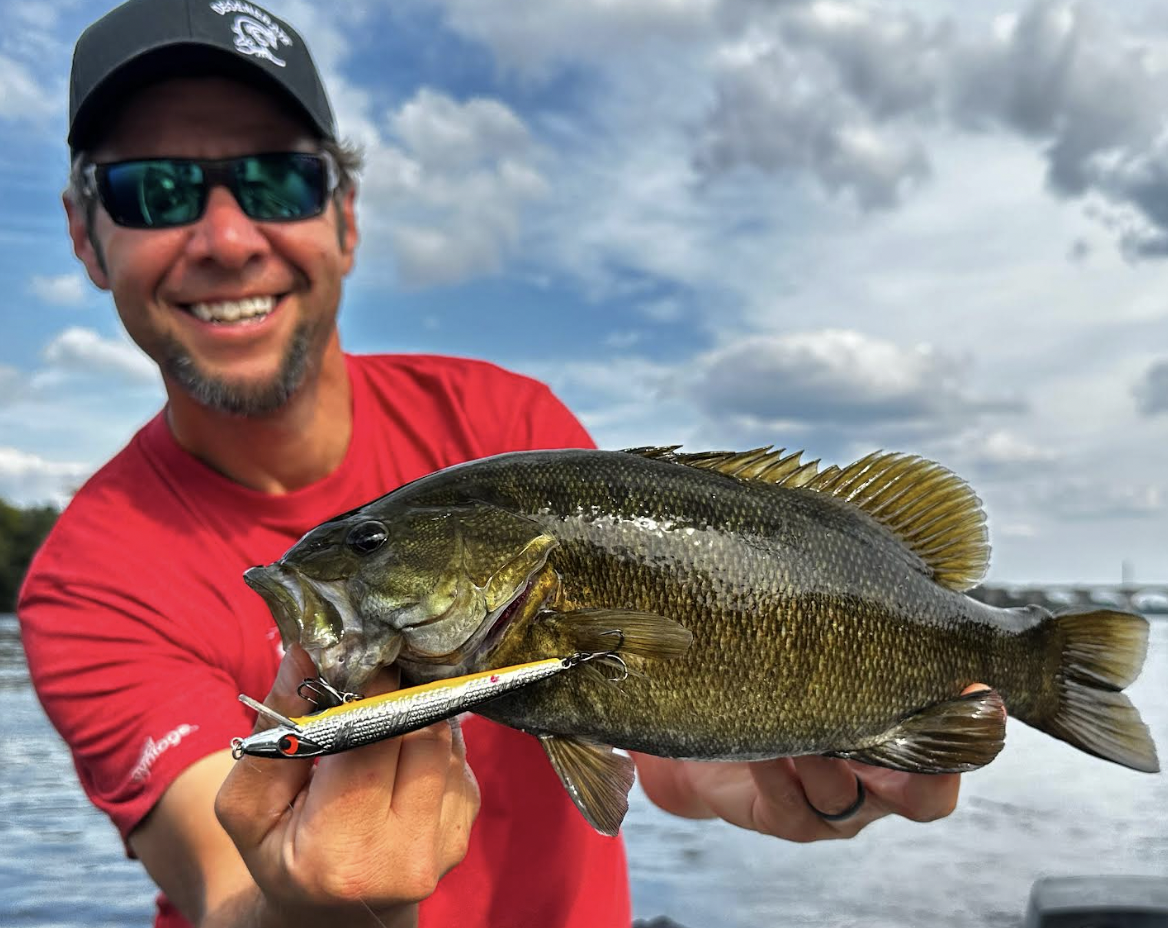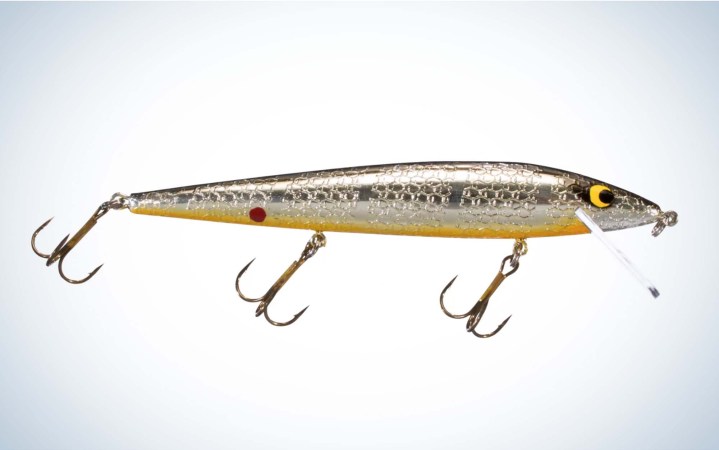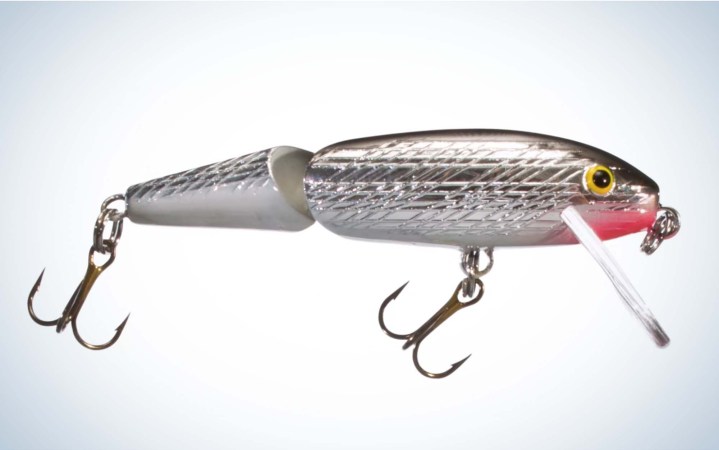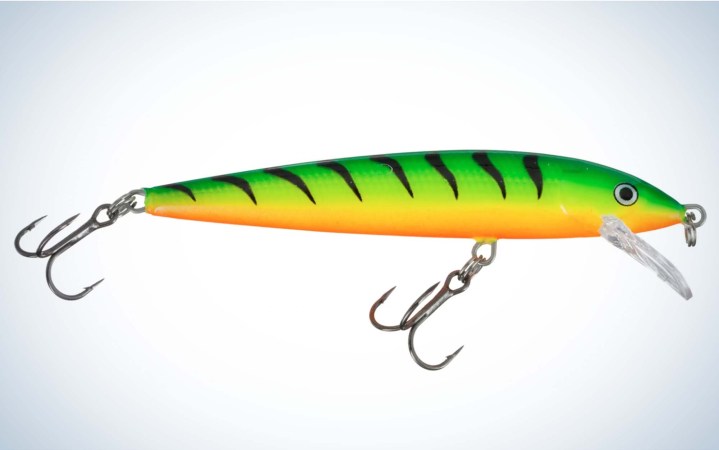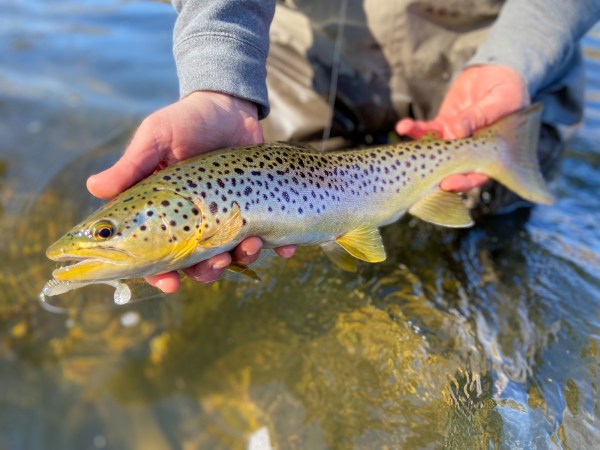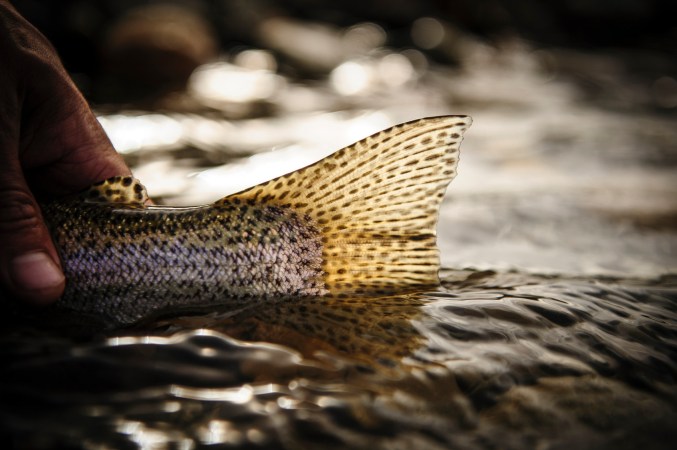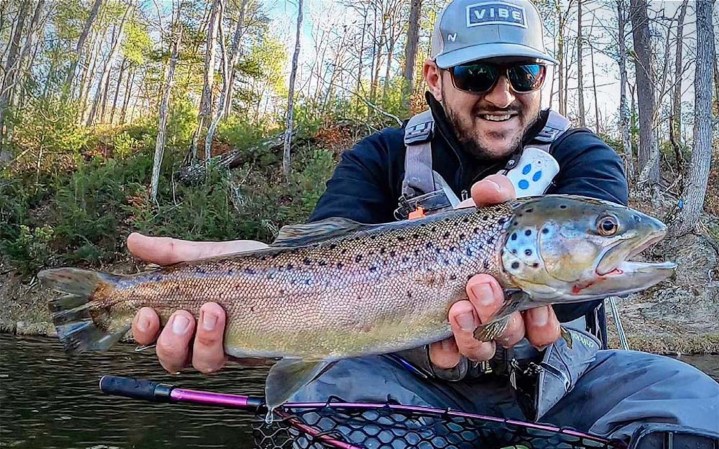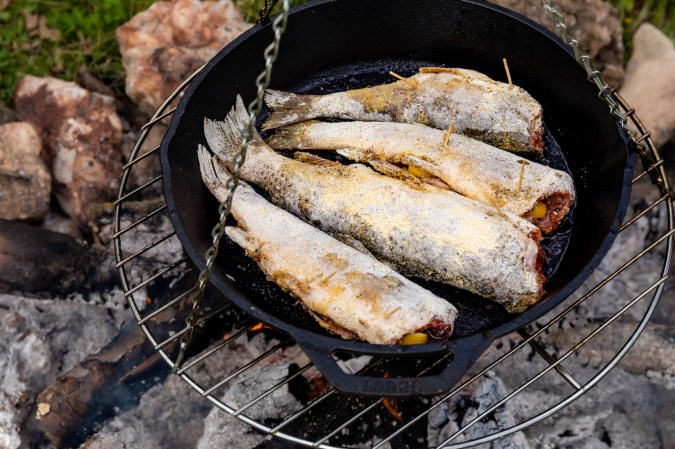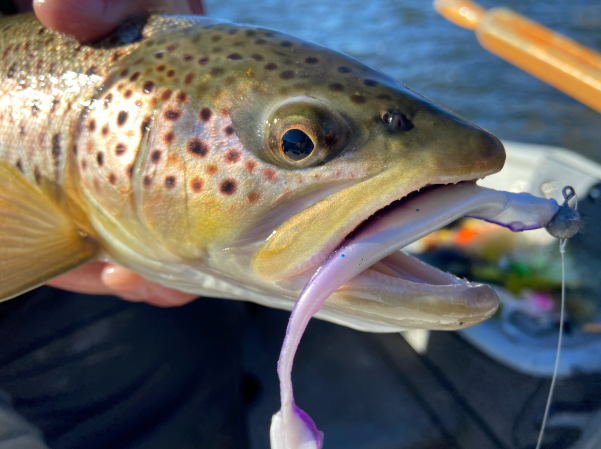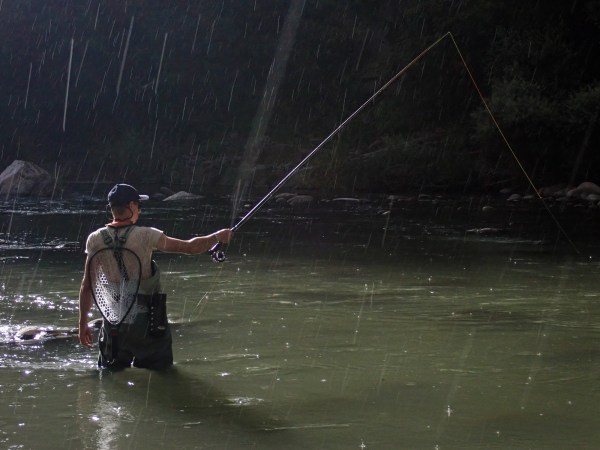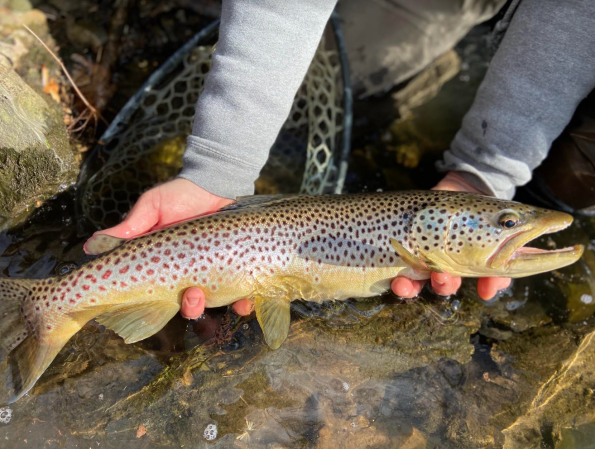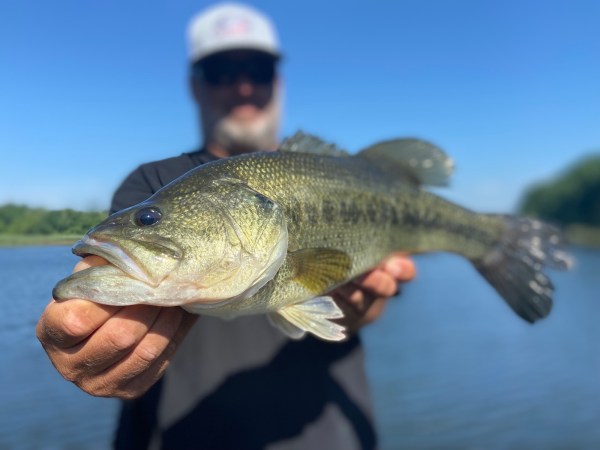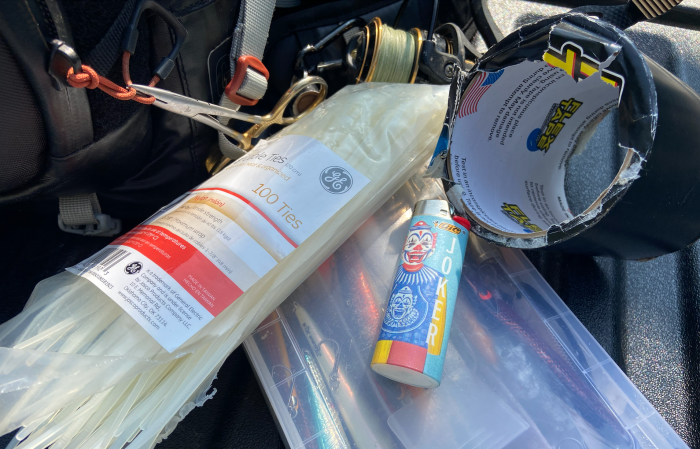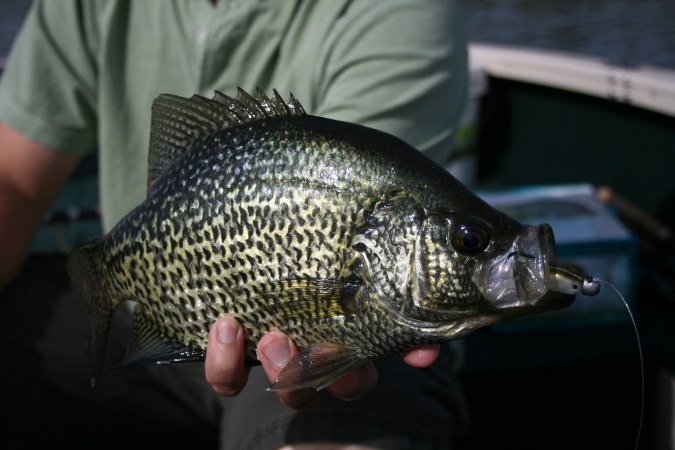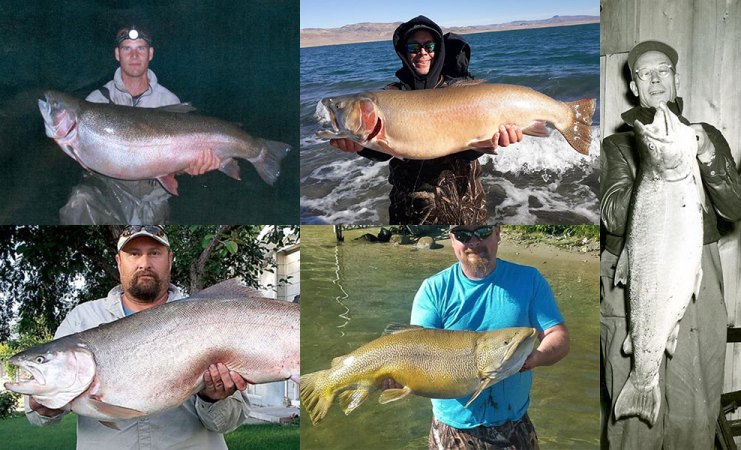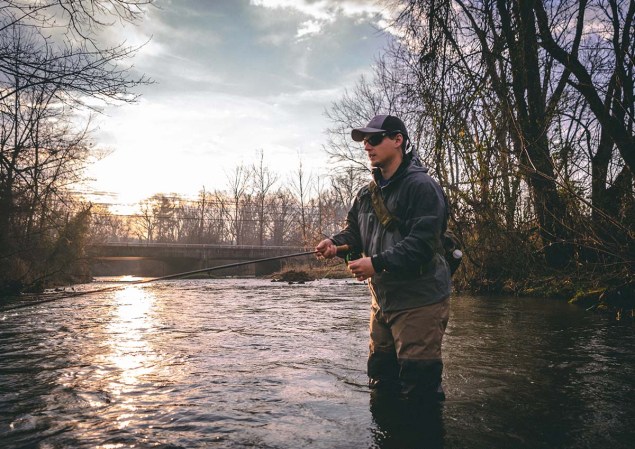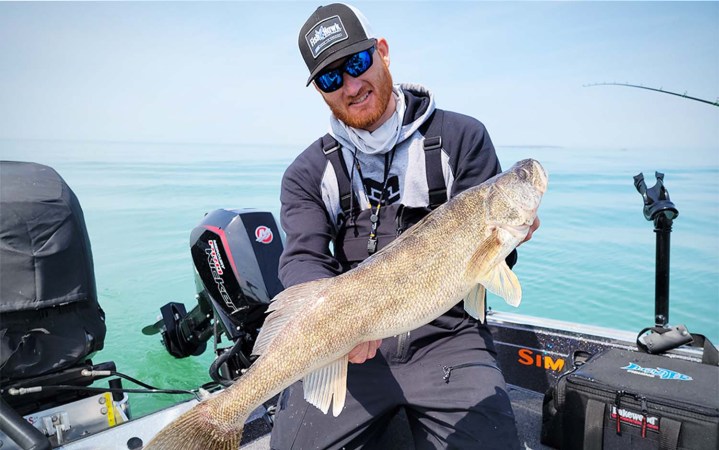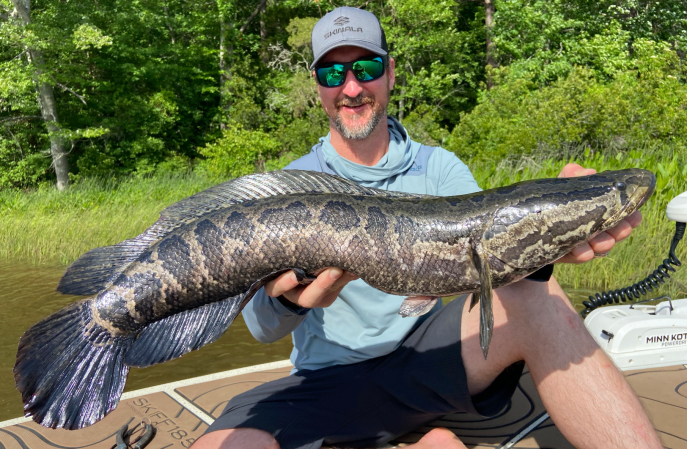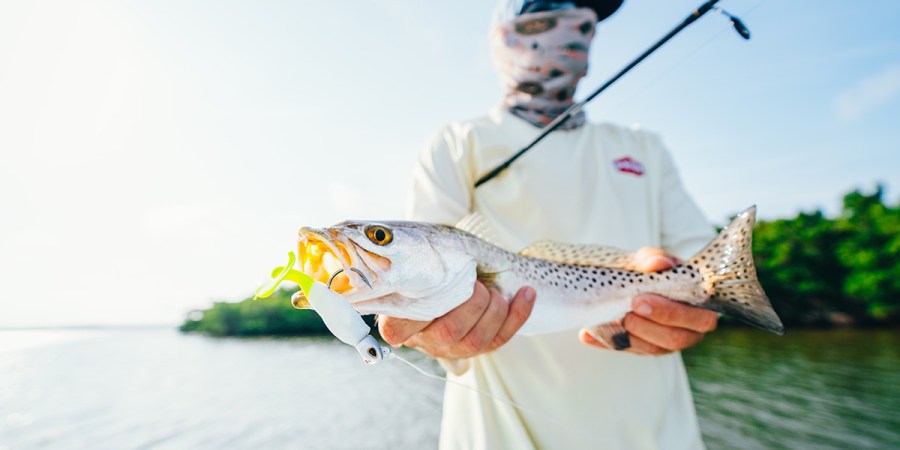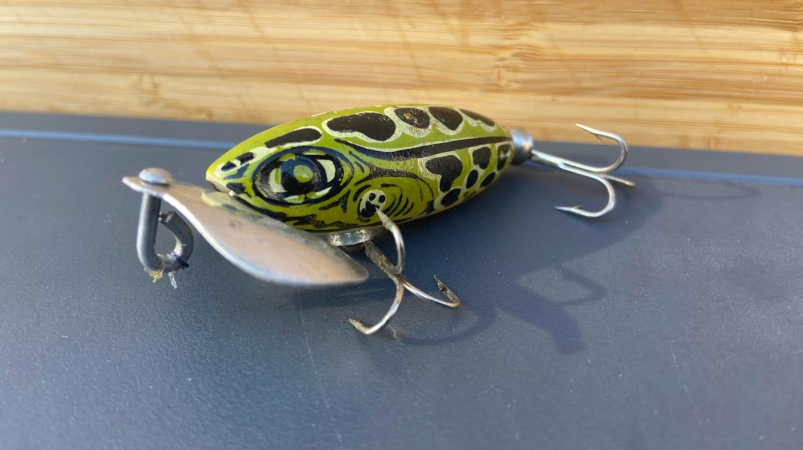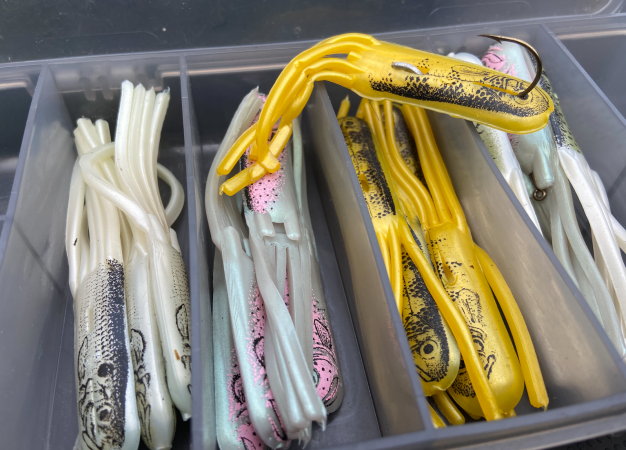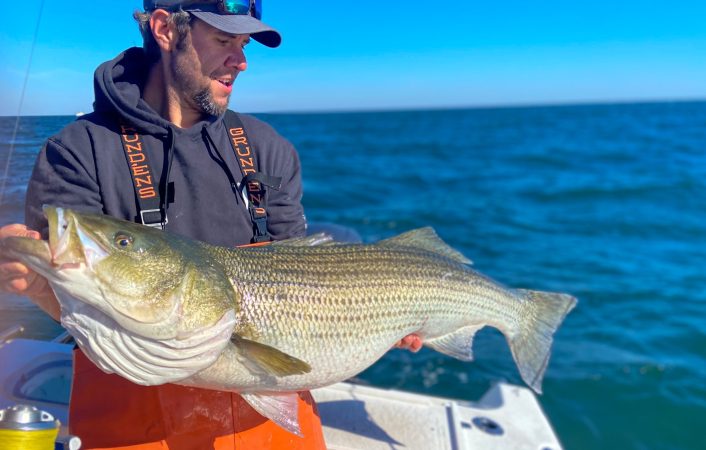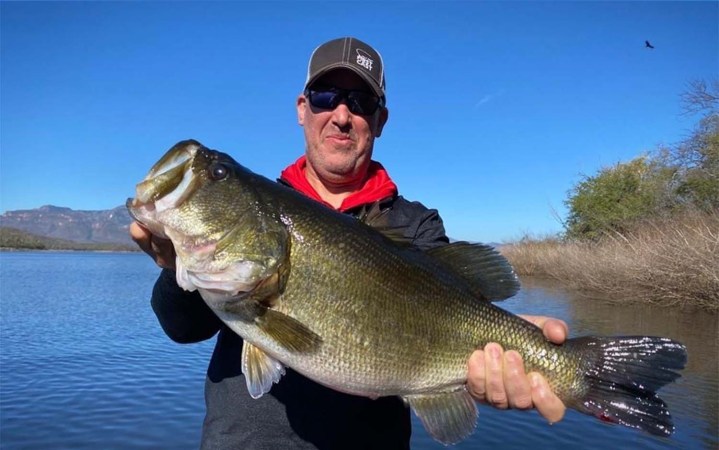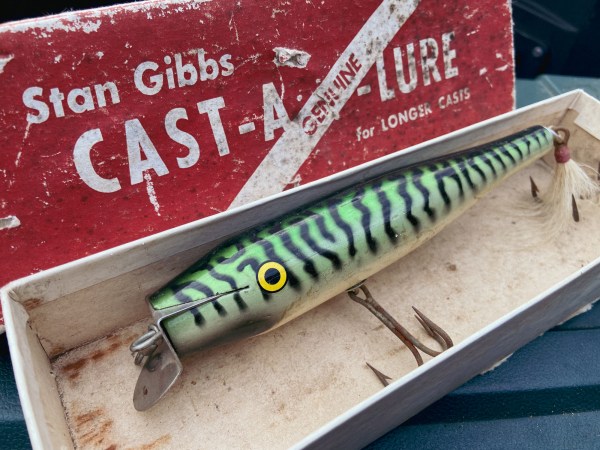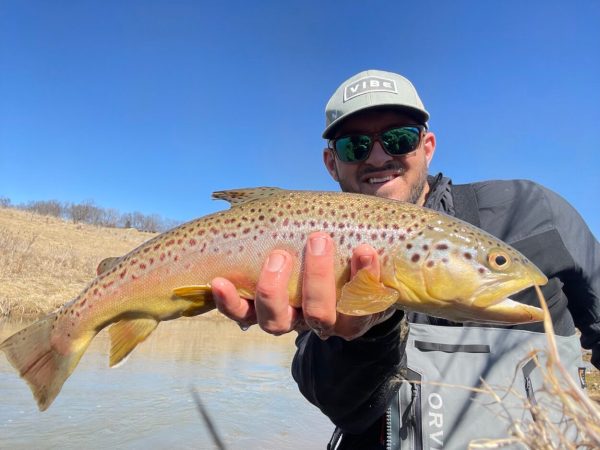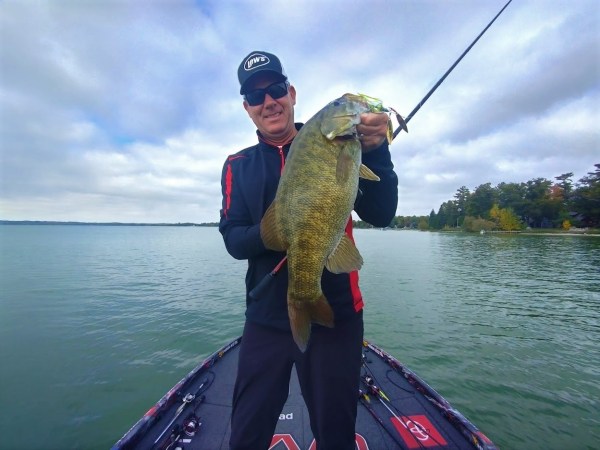We may earn revenue from the products available on this page and participate in affiliate programs. Learn More ›
Summer fishing is great, but if you have a jones for big, wild brown trout and smallmouth bass, there’s nothing like the fall and early winter. It’s been written many times that this is when these fish really “put on the feed bag” before it gets cold, though that’s up for debate. Some scientific data has suggested that fish grow less in fall, which means they eat less. Regardless, one thing is for certain: As the water cools, aggression levels in big bass and trout ramp up. Of all the methods you can employ to take advantage of that aggression, there’s none I like more than throwing a jerkbait.
Classic Jerkbaits vs Modern Jerkbaits
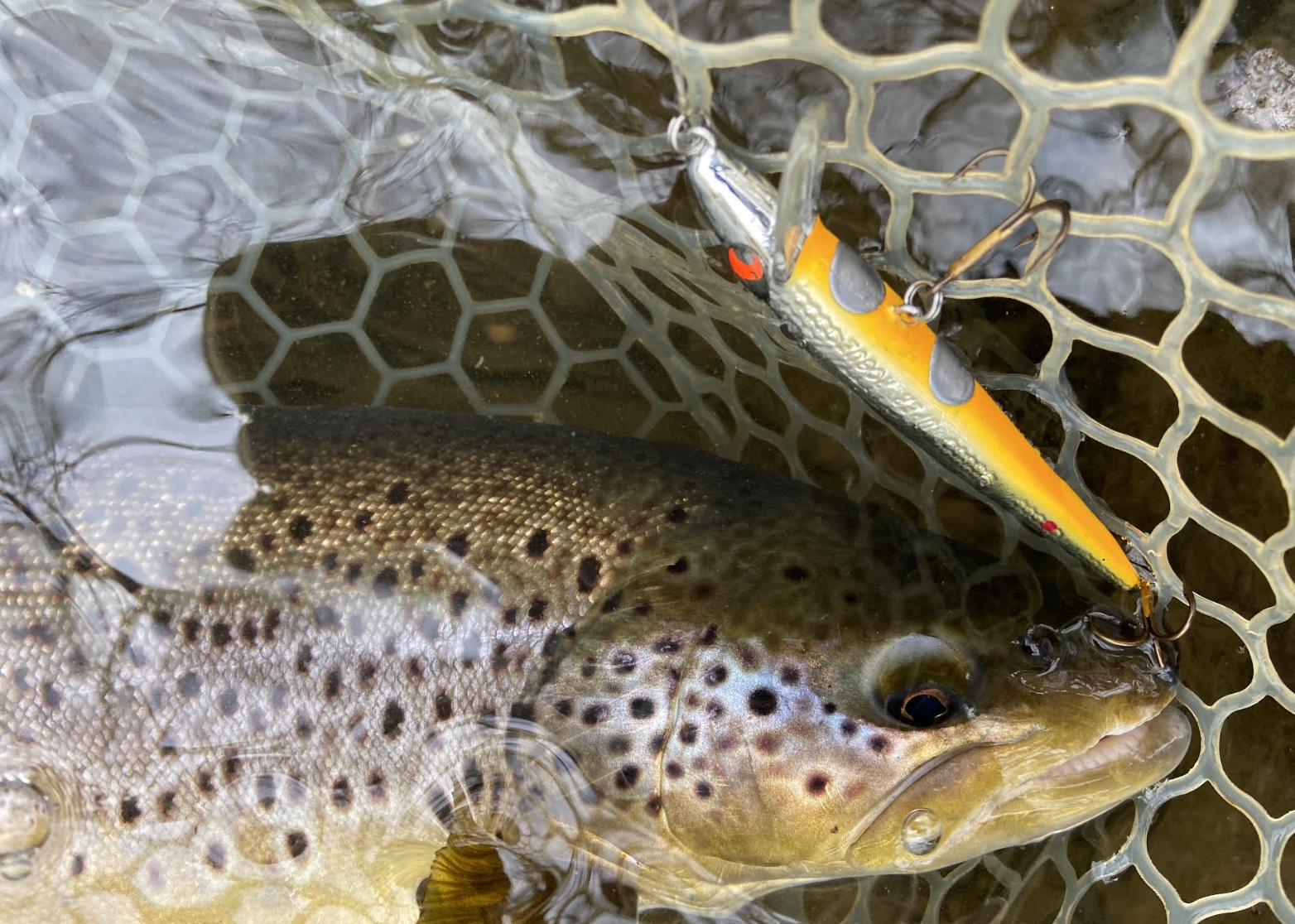
Jerkbaits are hard plastic lures with a diving lip. Their action imitates a wide variety of baitfish, and make no mistake, there are hundreds to choose from on tackle shop shelves. They’re made to be fished aggressively, and they dart, roll, and change direction with each twitch of the rod tip. Modern jerkbaits lean into new-fangled features like weights that transfer from one end of the bait to the other and unique suspension systems that allow them to hover in place. These features, of course, make new age jerkbaits expensive. They catch fish, no doubt, but I’m a big fan of the classics that have been producing for years and won’t break your wallet. Here are my three favorite old-school jerkbaits for fall action.
Read Next: Best Jerkbait Rods
Smithwick Rattlin’ Rogue
The Rattlin’ Rogue was born on the rivers of the Ozark Mountains decades ago when they were first emerging as trophy trout fisheries. Southern anglers not familiar with delicate northern trout tactics took a more aggressive bass and saltwater approach to trout fishing, quickly helping the Rogue emerge as a slayer of monster browns. It also held its own with northern smallmouths, and the lure is arguably the inspiration for today’s modern, technologically advanced jerkbaits.
Whereas lures similar in shape and design existed earlier than the Rogue, it was one of the first lures to lean into suspension, reaching depth quickly and rising slowly to give it more time in the strike zone. While other lures were meant to be cast and retrieved, the Rogue was designed to be fished more aggressively. Sharp cuts and whips of the rod tip made it dance, flash, and erratically change direction, drawing reaction strikes from huge fish.
The Rogue remains popular today, though it has largely taken a back seat to newer offerings. It is, however, significantly less expensive than many of those offerings, which makes you feel better about casting close to laydowns and banging it off rocks. Of all the models available, my go-to for big trout and smallmouths in the fall is the 4 1/8-inch Suspending Super Rogue Junior. I like to add a single SuspenDot on the belly just behind the lip to help it hover at depth even more effectively.
Rebel Jointed Minnow
The Rebel Jointed Minnow has been a staple in saltwater tackle boxes for decades, particularly in the striped bass scene. However, the 3 ½- and 4 ½-inch models do some serious damage in freshwater and are largely overlooked thanks to gobs of newer, flashier version of this lure style on the market. If you like variety, the Rebel will disappoint, as it’s only available in chrome with a blue back or black back. But there’s a reason why the company never unleashed it in a multitude of colors—chrome is really all you need in any water conditions.
Although the Rebel Minnow floats, it’ll dive to a maximum depth of 4 feet, which is plenty on your average trout or smallmouth river. What I like to do is reel quickly when the lure lands to get it deep fast, and once it’s down in the water column I’ll start finessing it with short, fast twitches of the rod tip.
The magic lies in the jointed tail, which many modern jerkbaits do not feature. Because of the tail, the Rebel has more action with less rod work. A single snap of the rod will make that tail kick and jackknife without needing to advance the lure very far forward. It creates the perfect imitation of an injured, struggling baitfish that big bass and trout can’t pass up.
Read Next: Best Trout Lures
Rapala Husky Jerk
You’d be hard-pressed to find a walleye angler that isn’t loaded up with Husky Jerks, particularly on big water like the Great Lakes. Ironically, however, the walleye crowd slow-trolls them. While they function very well being towed being the boat, they were designed to be cast and ripped like any other jerkbait. Still, despite having been around for a long time, to my ear you don’t hear about them as much in bass and trout circles as you do about modern Japanese jerkbaits like those made by Megabass and newer companies like 6th Sense that continue to gain popularity.
The Husky Jerk can easily reach depths of up to 8 feet, making it a great choice in deeper lakes or to attack that one dark, mysterious hole in the river where you know heavy fish live. When you work the rod aggressively, snapping and pausing, the husky Jerk kicks wide, presenting a broadside view to any fish in the area. This action can trigger fish that aren’t even hungry, but they just can’t pass up the opportunity.
Though Pink Clown has always been one of my more productive colors for trophy trout and bronzebacks, don’t be so quick to jump on newer colors. Classics like Firetiger and simple Gold have been produced for decades for a reason.

